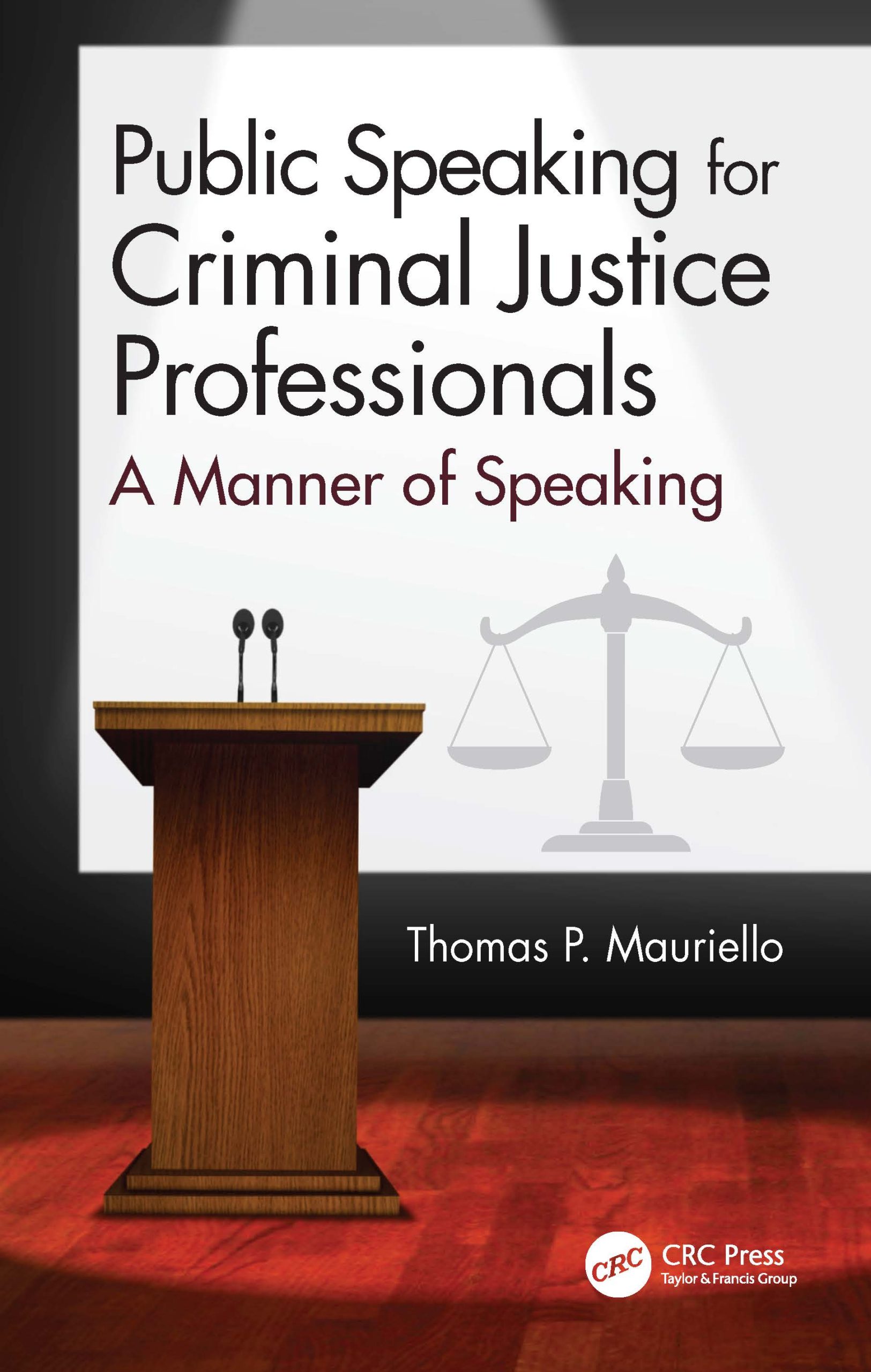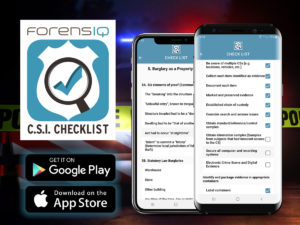3D Prints Takes Over Traditional Clay Modeling
Traditional Clay Modeling in Forensic Facial Reconstruction is being replaced by 3D Printings. The process consists of recreating the face of a person with only the skull as a reference. When making a clay model you had to be an artist schooled in anatomy, anthropology, and ontology. Even though clay models have been used for many years their is a major problem with the current practice of forensic facial reconstruction and it’s that the skull must be used and can, in the process, potentially be damaged. This machine is called Z Scanner where it makes a scan of the skull, then a Z650 3D printer is used to produce a lifesize replica of the skull. For more information go to the link below.
[Abstract written by Mercedes Quick, ForensIQ Intern, 10/27/14]
Departments of Justice & Defense Grants to Improve Forensic Identification
The Department of Justice and the Department of Defense have awarded assistant professor Catherine Grgicak in biomedical forensic sciences at Boston University School of Medicine, approximately $2.5 million to more accurately analyze DNA evidence at a crime scene. Grgicak and her collaborators are producing and testing methods that provide match statistics for DNA comparisons as well as determining the probability that a certain number of contributors give rise to biological evidence. For additional information, please go to the link below.
http://www.forensicmag.com/news/2014/10/doj-and-defense-grants-improve-forensic-identification
[Abstract written by Mercedes Quick, ForensIQ Intern, 10/29/14]
Detecting Explosives with Light
Research from the University of Adelaide has created a sensor that can detect tiny quantities of explosives with the use of light and special glass fibers. This fibre sensor can detect explosives in concentrations as low as 6.3 ppm (parts per million). Its analysis time are only a few minutes. Traditionally explosives detection has involved looking for metals that encase them such as in land mines. But today explosive devices will often have no metal in them so we need to be able to detect the explosive material itself. It uses a plastic material that emits red light when illuminated with green laser light, and the amount of red light it emits is reduced by the presence of explosives. It also has high sensitivity and it can detect tiny quantities of an explosive. This can also be used to quantify the amount of explosive by looking at how the light emission changes over time. This type of technology could help greatly in the fight against terrorism.
Click here for full article
Source: Science Daily
[Abstract written by Alicia Terrell, ForensIQ Intern, 051514]
Obliterated Serial Numbers in Firearms
A report released by The National Institute of Justice gives a different way to detect compromised serial numbers on firearms. The two most used ways for restoring serial numbers is MPI and chemical etching. These technologies were compared to magneto optical (MO) sensor technology. This comparison revealed that MO sensor technology is a viable and reliable serial number restoration technique. This technique doesn’t damage the sample. Its also safe to use and easy. Also compared to the other technologies it did better in sensitivity, specificity, accuracy, and precision. The MO sensor technology works with multiple layers called wafers. It works by passing polarized light from a light source under influence of an external magnetic field. The light is reflected by the mirror layer after crossing the MO active film (layer). An analyzer eliminates all non‐altered components of the mirrored light beam. The result is a colored image of all magnetic fields over the sensor area where a camera records the image. The draw back of this technology is that it can only be used on flat surfaces and it is more expensive. But because of its positives it can be used as a fall back plan to investigators.
Click here for full article
Click here to read report
Source: Forensic Magazine
[Abstract written by Alicia Terrell, ForensIQ Intern, 050814]
Upcoming Technology Assisting in Arson Investigations
When it comes to arson cases, one of the most time consuming processes involved is determining the cause of a deliberately set fire. University of Alberta researcher James Harynuk and Royal Canadian Mounted Police scientist Mark Sandercock are taking steps towards simplifying this process by teaming up to develop a computer program that can sort through the chemical clues left behind by arson. Using gasoline chemical samples from 232 samples drawn from fire debris in cases under investigation in Canada, a filter was developed that isolated the signature of gasoline and was used to determine the presence of gasoline in the debris sample, and thus indicate if it could have been the source, or one of the sources, of the fire. Sandercock stated that “By getting the laboratory results back quickly, investigators can use this information to ask the right questions when interviewing people or evaluating other evidence, which will help them resolve the case more quickly by pointing them in the right direction.” The program has yet to be given a name but is currently in the process of gathering support for commercialization as well as testing on other less common flammable fluids.
Read the full article here.
[Abstract Written by Walter Tates, Forens-IQ Inc. Intern, 050114]
New Technology Helping with Old Cases
New technology is constantly emerging with the aim of creating more effective and efficient means of analyzing, processing, and understanding evidence gathered from crime scenes. These technologies can even help with revisiting cases. The FBI is doing just that and using new technology developed by the bureau called the Next Generation Identification system to reanalyze fingerprint evidence in a cold case from 1997, and opening the door to the re-investigation of other cold cases as well.
Click here to read the article.
[Abstract Written by Walter Tates, Forens-IQ Inc. Intern. 041714]
AI (Artificial Intelligence) Assistance – In Crime Labs
Under staffing is a constantly talked about problem in law enforcement, as well as in crime labs. The Fort Worth police crime lab is subject to this problem and has resorted to artificial intelligence for assistance. The crime lab has purchased a $92,000 robot to assist them with lab tasks such as DNA analysis, speeding up the process and saving them money.
Click here to read the full article.
[Abstract Written by Walter Tates, ForensIQ Inc. Intern. 041714]
Bruising Sensor to Determine Child Abuse
A University of Louisville research team has developed a force sensing skin that can be adapted to a child surrogate to identify potential bruising locations during mock laboratory experiments of accidents and abusive events. The presence, distribution and location of bruising on a child’s body can give a roadmap to documenting a child’s exposure to impact. It’s designed to contour to all body regions of the child surrogate to provide this roadmap. This mapping could also show the magnitude of force of each impact. This type of information could be critical in a forensic analysis of a child’s injury. Child surrogates have been used to study motor vehicle crashes to predict injury risk. But these studies have not focused on potential injuries to the skin or soft tissue. The researchers at Louisville want to develop a base of these roadmaps to be associated with various simulated events and compare this to clinical studies.
Source: Science Daily
Click here for full article
[Abstract written by Alicia Terrell, ForensIQ Intern, 041714]
3D Scanning for Illinois State Police
Illinois State Police will start using a 3-D scanner that will allow better record data from crime scenes. This technology will allow juries to virtually be at the scene of a crime. It will allow investigators to be able to reconstruct and preserve evidence easier. The scanner, Leica C10, is on a tripod and uses lasers to capture a room by creating a 3-D image. Once captured these images are uploaded to software to create a 360-degree virtual tour of a crime scene. The scanner was used at a recent shooting and took about four hours to scan images from inside and outside of a crime scene. Though this takes more time the Illinois State Police think it will be worth it. This will greatly improve presentation in the court room.
Source: BND
Click here for full article
[Abstract written by Alicia Terrell, ForensIQ Intern, 041714]
Fluorescent Sensor Detects the Date-Rape Drug
The technical term for the date-rape drug is GHB or Gamma-Hydroxybutyric acid. It is a central nervous system depressant that can incapacitate a person. GHB is odorless, colorless, and little salty and is pretty much undetectable when mixed in a drink. It takes effect within 15 to 30 minutes and can last for three to six hours. This is the reason why sexual predators use it. A Chemistry team from the National University of Singapore has developed a fluorescent sensor that detects the presence of GHB. The sensor is highly sensitive and produces a quick response. When the GHB is added to a drink the sensor’s florescent color looses its intensity. The team plans to invent a portable GHB detection kit within a year. This could make a vast difference in the prevention of GHB facilitated sexual assault.
Click here for full article
Source: Forensic Magazine
[Abstract written by Alicia Terrell, ForensIQ Intern, 040314]
Fingerprints May Hold More Information
For years, fingerprints have been significant in terms of identifying people involved in crimes, whether they are victims, suspects, or neither. But what if fingerprints could tell us more about the person they belong to than simply their identity? In the near future, this could be a reality as Sheffield Hallam University has pioneered technology to do just that. The technology is called Matrix Assisted Laser Desorption Ionisation Mass Spectrometry Imaging (MALDI-MSI) and is said to be able to determine the sex of the individual as well as certain chemicals or objects that they have recently come into contact with.
Click here to read more.
[Abstract by Walter Tates, ForensIQ Inc. Intern. 040214]
Fiber Identification – Getting Deeper than the Surface
X-ray photoelectron spectroscopy is a technique used to determine the chemical signature of the surface of whichever fabric is being tested. This is performed by zapping the test sample with a focused X-ray beam, knocking electrons off of the surface and into a detector to measure the kinetic energy possessed in the electrons. This technique, however, is not very effective on fabrics treated with chemicals. Using a tweaked method of this technique, Brian Strohmeier, a scientist at Thermo Fisher Scientific, a laboratory-instrument company based in Massachusetts, is able to get beyond the surface and past the chemical treatments. This opens the door to a more comprehensive analysis of the fabric and where it originated.
Click here to read the article.
[Abstract by Walter Tates, ForensIQ Inc. Intern, 040314]
Voice Biometrics Technology
Nuance Communications has created a tool called Nuance Forensics. It is a voice biometrics solution that can assist with criminal investigations and the prosecution and defense of suspects. Nuance uses a voice biometrics technology to help confirm or deny someone’s identity based on audio files that are used during investigations. This technology delivers accurate and unique identifying characteristics based on an individual’s voice. Instead of listening to hours of audio recordings, investigators can use Nuance to pinpoint conversations of interest by filtering out audio recordings. This will accelerate the investigations and may be able to be used for the purposes of prosecution or defense of a suspect. Nuance Forensics also has innovative algorithms that can identify dialect, the language spoken, and the gender of a speaker in a recording.
Click here for full article
Click here for more info on Nuance Communications
Source: Forensic Magazine
[Abstract written by Alicia Terrell, ForensIQ Intern, 032714]
DNA Mugshot
Genetics have been used in the past to hypothesize ancestry based on physical features that can be predicted through the information coded in DNA. But is it possible to predict what the person actually looks like? A new technology called “molecular photofitting” is being explored as a way to produce an image of a suspect based on DNA left at a crime scene. Using several genetic variants found in DNA coding, it is already possible to determine ancestry and some shades of hair color, but strides have been mad to narrow the scope down to determining facial structure, as variants in genes have been linked to predicting facial shape.
Click here to read the full article.
[Abstract Written by Walter Tates, ForensIQ Inc. Intern, 032714]
Intelligent Fingerprinting for Drug Screening
A British company, Intelligent Fingerprinting, is developing the first handheld fingerprint-based drug screening device. This device is a non-invasive technology that can screen for multiple drugs and gives results in less than ten minutes. They have gotten funding from private US-based investors on top of government funded grants that will support their final stages of providing this product commercially. This could end the hassle of specialist collection arrangements and biohazard disposal facilities. The device is expected to go into pilot production in 2014.
With Colorado and Washington having legalized recreational marijuana there is the question of road side testing for impaired driving. Maybe this type of technology could shed light on the issue.
Click here for full article
Source: Forensic Magazine
[Abstract written by Alicia Terrell, ForensIQ Intern, 030514]






